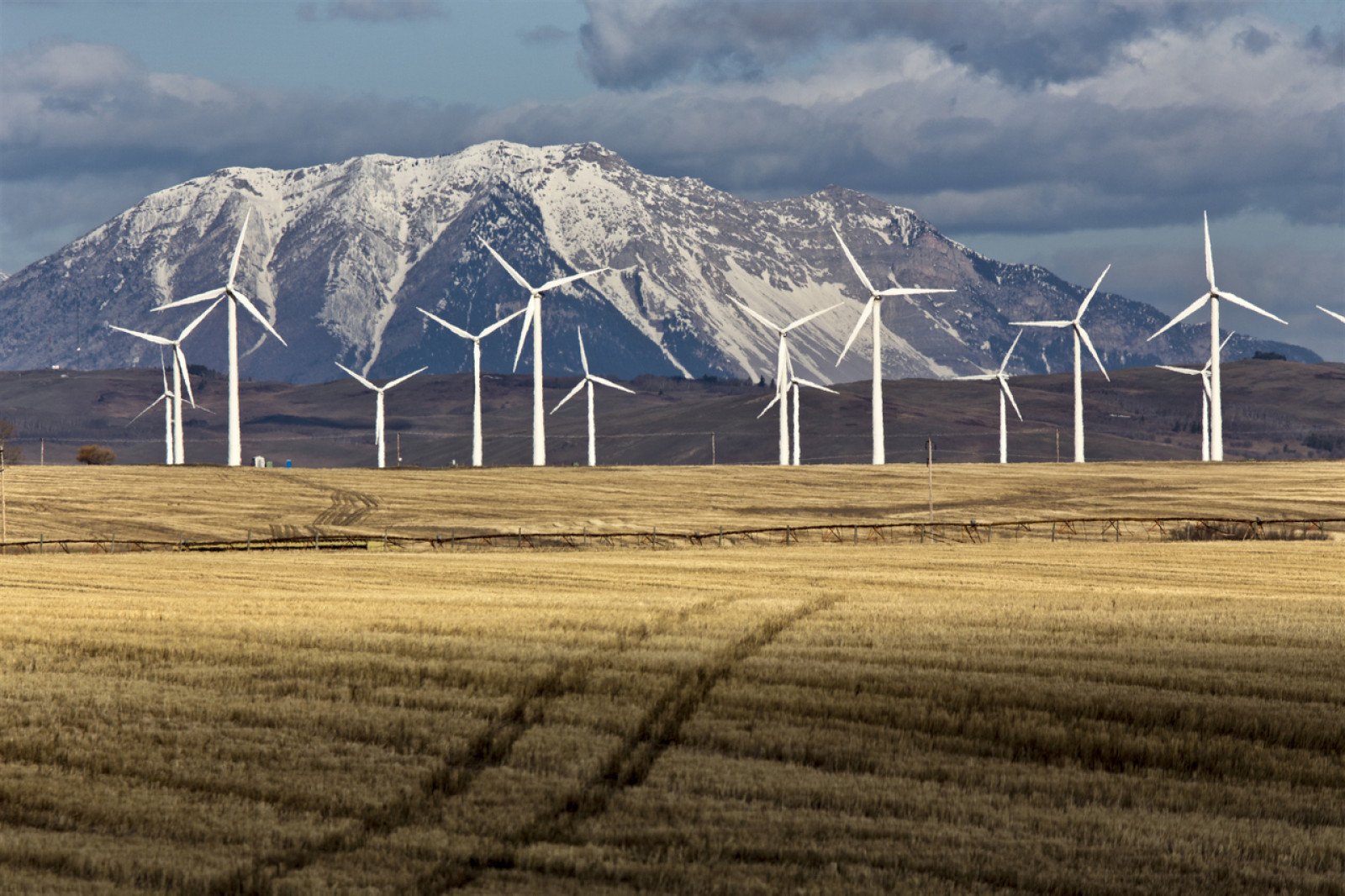Energy transformations: Wind power
Transforming wind into mechanical energy that powers our homes.

Overview
Wind is a renewable energy source that can be used to create electricity. After watching a short, animated video, students share their notes in small groups and discuss what they know about wind energy and energy transformations.
Instructions
What you'll need
- "Energy transformations: Wind power" worksheet
- Pinwheel
- Paper fan
Start with what you know
- Write a list on the board of what students know about wind turbines. Here are some questions to ask that will get ideas flowing:
- What might the pinwheel and paper fan have in common with a wind turbine?
- Where does the energy come from to make the pinwheel and fan work? The energy from moving air makes a pinwheel work and the energy for a paper fan comes from the person who’s holding it.
- Is an energy transformation taking place? In the pinwheel, moving air is transformed into mechanical energy to spin the wheel. But with the fan, the kinetic energy of a person waving it creates the kinetic movement of air, so there’s no energy transformation.
- Now, explain that a wind turbine is a device that transforms energy from one type into another. If students are familiar with energy transformations, can they predict the energy transformations in a wind turbine? Add their ideas to the list.
Before the video
- Explain the acronym NIMBY (not in my backyard). NIMBY refers to a person or a group of people who object to (disagree with) a development in their neighbourhood, and don’t want something built or placed too close to their home (not in their backyard).
Watch the video
- Watch the video, pausing at 1:31 to discuss what NIMBY means in this video.
- What are some reasons people may not want wind power being generated in their community?
- Do you think there’s a way for both sides to be satisfied?
- Finish the video, then hand out copies of the "Energy transformations: Wind power" worksheet.
- Show the video again, stopping at key points for students to fill out their worksheets. Provide a few more minutes after the video for students to complete their notes.
Discussion
- Ask students to form groups of four and share their notes. Have them add or make changes to their notes as they review with their group.
- Go over the worksheet as a class. Encourage discussion when there are different opinions and be sure that accurate information is being reinforced.
Modify or extend this activity
- Relate the energy transformation concepts to "What is renewable energy" and "Energy transformations and hydroelectricity".
- Have students compare the energy transformations of a hydroelectric dam with a wind turbine.
Curriculum Fit
Grade 4 Science
Content
- Energy has various forms
- Devices that transform energy
- Energy is conserved
Curricular competencies
Questioning and predicting
- Demonstrate curiosity about the natural world
Evaluating
- Identify some simple environmental implications of their and others’ actions
Communicating
- Represent and communicate ideas and findings in a variety of ways, such as diagrams and simple reports, using digital technologies as appropriate
Assessments
Collect worksheets and assess for growing knowledge of the energy transformations in a wind turbine.
Teaching Notes
A wind turbine is an example of a device that can transform one type of energy into another. Wind (moving or kinetic energy) moves the turbine blades which are connected to an electromagnetic generator by a shaft. The generator is the point of the transformation. This is an example of a renewable energy source that can be used to create electricity.






